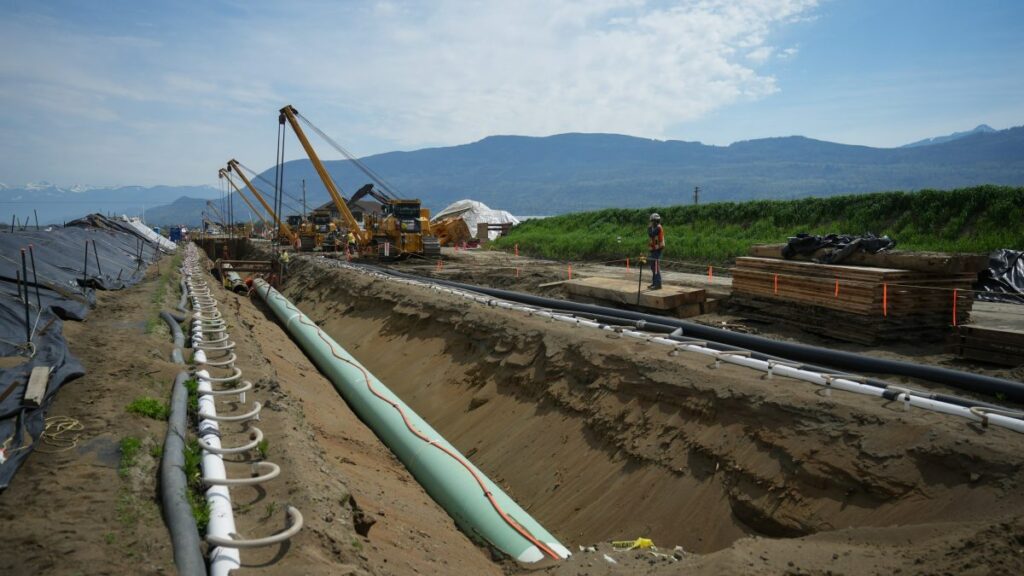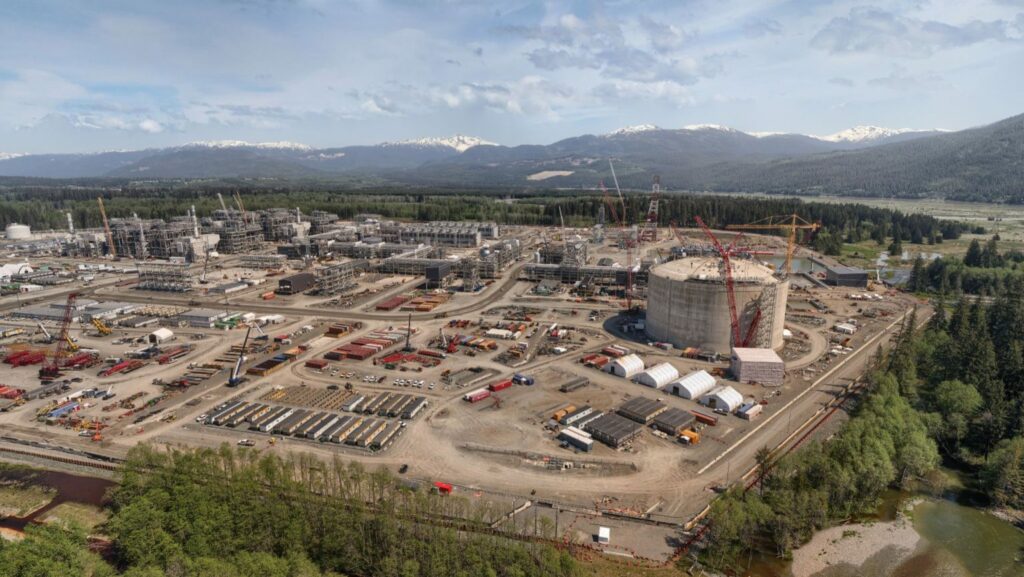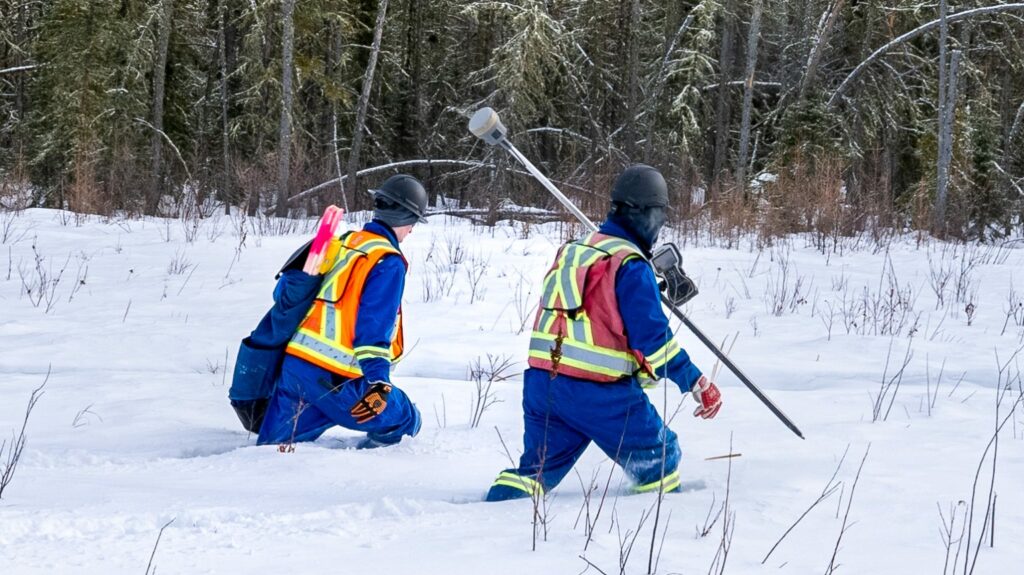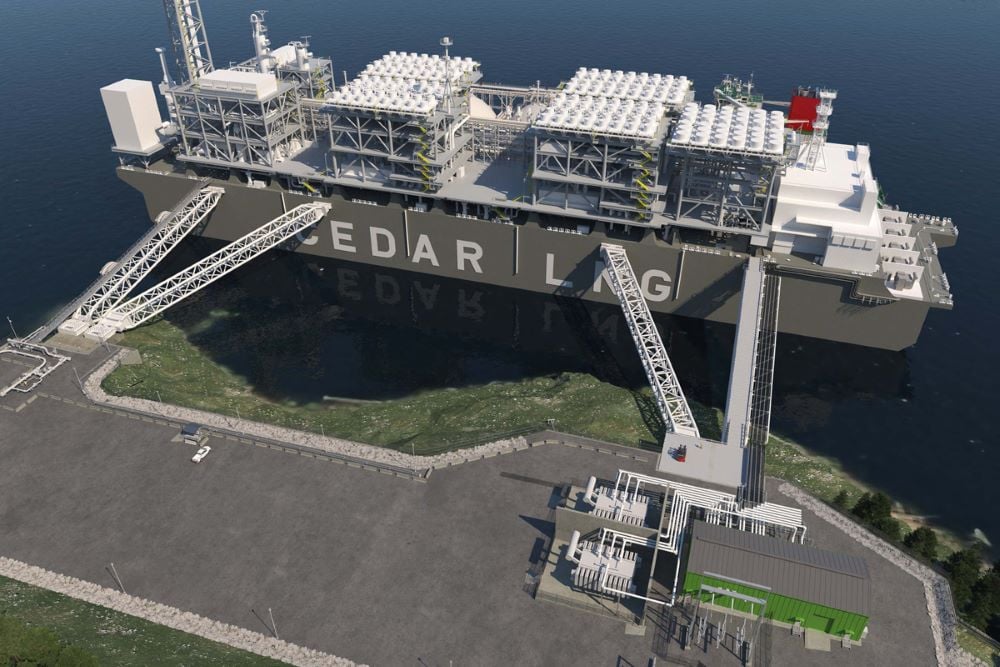Activity promises to highlight Canada’s position as a world supplier of choice
Follow CEC on LinkedIn CEC LinkedIn
Follow CEC on Facebook CEC Facebook
Follow CEC on Twitter CEC Twitter

Workers lay pipe during construction of the Trans Mountain pipeline expansion on farmland in Abbotsford, B.C., on May 3, 2023. CP Images photo
It’s going to be a big year for Canadian energy, with major milestones anticipated that will transform Canada from a supplier with a single customer (the United States) to a global player.
Global demand for oil and gas is expected to stay strong in the decades ahead as the world works to reduce emissions, still supplying nearly half of energy needs in 2050, according to the International Energy Agency.
Activity in 2024 promises to highlight Canada’s position as a supplier of choice with a leading approach to reducing emissions and engaging Indigenous communities.
Here are five things to watch.
5. Start-Up Activities for LNG Canada

Construction of the LNG Canada export terminal is now more than 90 per cent complete. Photo courtesy LNG Canada
Against the backdrop of surging liquefied natural gas (LNG) demand – Asia’s consumption hit a record 26.6 million tonnes in December – Canada’s first LNG export terminal is preparing for start-up.
LNG Canada will have among the world’s lowest emissions for LNG supply, at 0.15 tonnes of CO2 equivalent per tonne of LNG, less than half the global average.
This year, the terminal at Kitimat, B.C. will test and fine-tune equipment and the process of producing LNG will begin, the company says.
The start-up program will take more than one year to complete.
Moving into the final stages at LNG Canada follows the recent completion of the Coastal GasLink Pipeline, connecting natural gas supply from northeast B.C.
4. Progress Toward Oil Sands Net Zero

The Pathways Alliance has extensive work underway on the environmental program for its proposed CCS project, involving 135 experts ranging from aquatic and wildlife biologists to archeologists and paleontologists who have spent more than 1,600 hours in the field working to minimize environmental disturbance. Photo courtesy Pathways Alliance
Major regulatory applications are expected in 2024 for one of the world’s largest proposed carbon capture and storage (CCS) networks, located in Canada’s oil sands.
The project would connect CO2 captured at an initial 14 oil sands facilities by pipeline to a shared hub for storage deep underground.
It is the foundation of the plan by the Pathways Alliance – companies representing 95 per cent of oil sands production – to reduce emissions from operations by nearly one third by 2030 on the way to net zero by 2050.
Pathways has said that after regulatory approvals are complete, CO2 injection and storage could begin by late 2026.
3. Growth in Indigenous Ownership

Eva Clayton, back left, President of the Nisga’a Lisims Government (joint venture owner of the proposed Ksi Lisims LNG project), Crystal Smith, back right, Haisla Nation Chief Councillor (joint venture owner of proposed Cedar LNG project), and Karen Ogen, front right, CEO of the First Nations LNG Alliance pose for a photograph on the HaiSea Wamis zero-emission tugboat outside the LNG2023 conference, in Vancouver, B.C., Monday, July 10, 2023. CP Images photo
The rising tide of Indigenous ownership in Canadian energy is likely to continue growing in 2024.
From LNG terminals to oil and gas pipelines, natural gas-fired power plants and CCS projects to reduce emissions, more Indigenous communities are taking on a leadership role.
Since 2022, more than 75 First Nations and Métis communities in Alberta and British Columbia have agreed to ownership stakes in energy projects including the Coastal GasLink pipeline and major oil sands transportation networks.
Indigenous loan guarantee programs like those offered by the Alberta Indigenous Opportunities Corporation (AIOC) are helping communities invest.
So far, the AIOC has underwritten more than $500 million in loan guarantees. This year it has $3 billion of support available, up from $2 billion in 2023.
Details of a proposed national loan guarantee program to help facilitate Indigenous equity ownership in major resource projects are also expected in the federal budget this spring.
2. Green Light for Cedar LNG

Rendering courtesy Cedar LNG
Owners of the world’s first Indigenous-led LNG project – a floating terminal at Kitimat, B.C. –plan to make the final decision to proceed within the next three months.
Cedar LNG, owned jointly by the Haisla Nation and Pembina Pipeline Corporation, would have capacity to export three million tonnes of LNG per year, primarily to Asian markets.
With emissions intensity of 0.08 tonnes of CO2 equivalent per tonne of LNG, it would be one of the lowest carbon footprint LNG projects in the world.
In early January, the partners reached the critical milestone of selecting the primary contractors to engineer, build and deliver the floating LNG unit.
A final investment decision is now expected in the first quarter of 2024.
1. Completion of the Trans Mountain Pipeline Expansion

Worker at Trans Mountain’s Edmonton terminal. Photo courtesy Trans Mountain Corporation
After more than 12 years in the making, Canada’s first large-scale access to growing global oil markets is now weeks away from completion.
The existing Trans Mountain pipeline system from Edmonton, Alberta to Burnaby, B.C. runs consistently at maximum capacity with producers seeking more export space than is available.
The expansion will increase service by about 600,000 barrels per day, bringing more Canadian oil to customers around the world, primarily on the U.S. west coast and Asia.
After the recent resolution of a regulatory delay, Trans Mountain can now proceed with the last two per cent of construction.
The company anticipates oil will flow on the expanded line before the end of March.
The unaltered reproduction of this content is free of charge with attribution to Canadian Energy Centre Ltd.
Share This:



